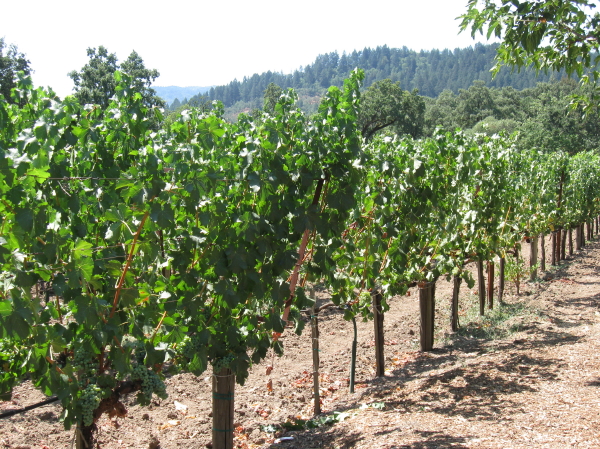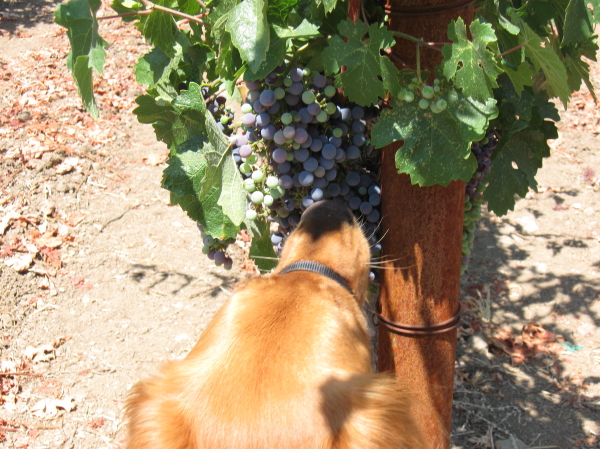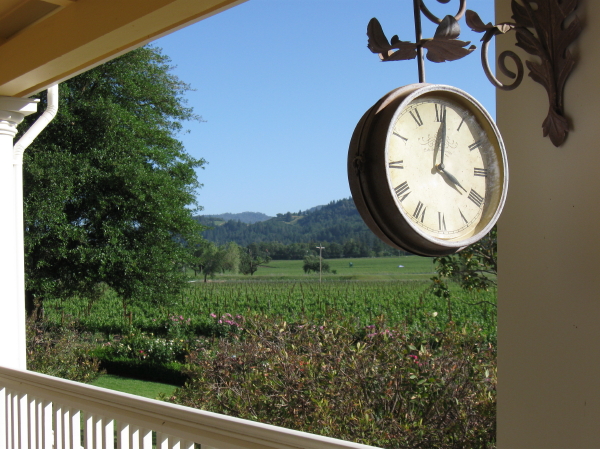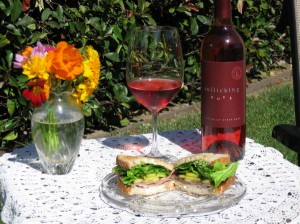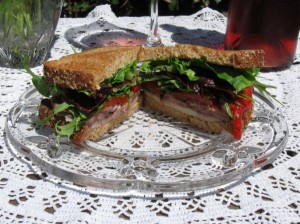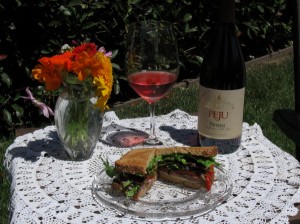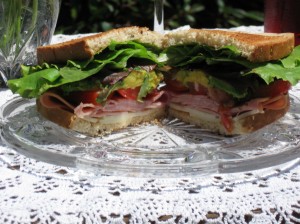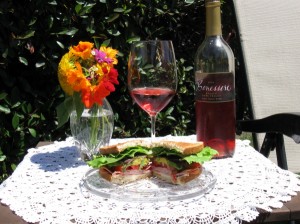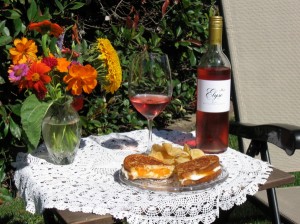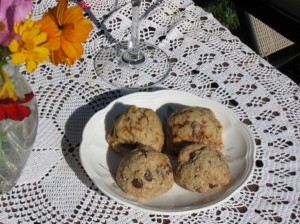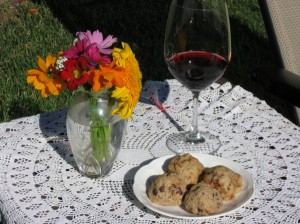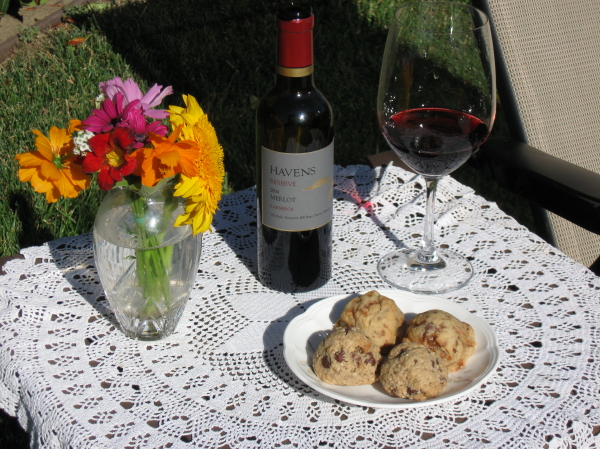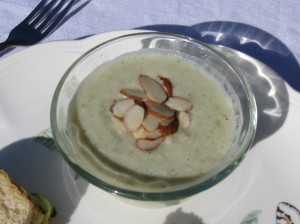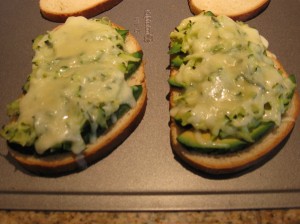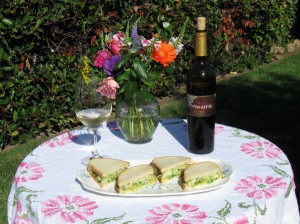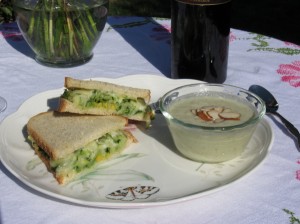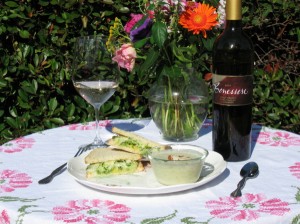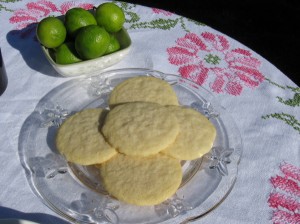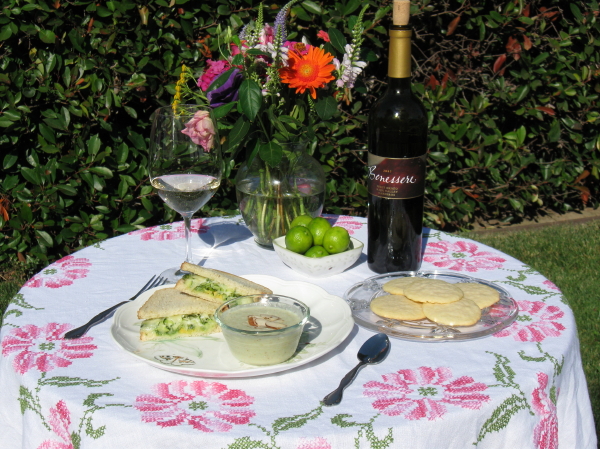Aug 12 2009
Some Like it Hot
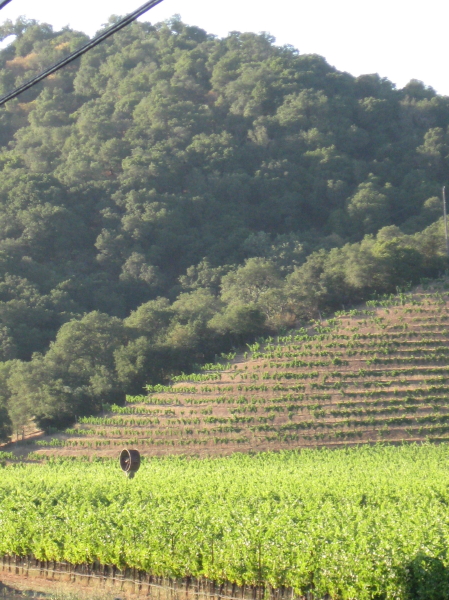
Whether it is hot weather or spicy food, some people just like it “hot”. If you are looking for a wine that will hold up well in either situation, Gewürztraminer is a superb choice.
Gewürztraminer is a white wine grape which is made into either a dry or “off-dry” wine and is known for its sweet taste. At first sip, one would almost think that the wine was a dessert wine, but it is not. As you will recall from my article titled “Summertime Good Libations”, Gewürztraminer can be made into a dessert wine such as the Late Harvest Gewürztraminer that is produced by Mayo Family Winery in Sonoma Valley. However, when it is made just into a white wine, it is commonly refreshing with a hint of sweetness and is predominately characterized by the flavor of lychee (a tropical fruit) and a romantic floral bouquet that does not overwhelm your senses or remind you of your grandmother’s perfume. It is because of these qualities that this is the wine that you will want to enjoy poolside, at a picnic at the beach and in the company of spicy foods.
Despite its perfect accompaniment to hot weather sipping and spicy foods, the grape itself is temperamental about its climate and soil. Gewürztraminer grapes grow better in cooler climates which can be a challenge in the United States. In California, they are grown more successfully in Sonoma, Mendocino and Monterrey. While the grape does require cooler temperatures, it also requires dry and warm summers, making California an ideal location for harvest in the United States. The grape itself ripens late and if not picked at the proper moment, the wine will not display any acidity. If the grape is picked too early, any floral nose and sweet flavors will be lost. If made well, Gewürztraminer is a sensual and dreamy wine.
Mayo Family Winery (“Mayo”) in neighboring Sonoma County impressed me earlier this year with its Late Harvest Gewürztraminer. When I tried its off-dry Gewürztraminer, the wine met my high expectations. As a quality Gewürztraminer should, Mayo’s Gewürztraminer provides a hint of spice on the nose (Gewürz in German means “spice”), follows with smooth sweet lychee fruit on the palate and a small twist of acidity. Because it is off-dry, when you pour it into your wine glass, you will see some bubbles along the edge of the glass. This is yet another sign of a quality, balanced Gewürztraminer.
The past few days in Napa Valley have reminded its residents that summer is not over as daily highs flirted into the mid-90’s. Coastal breezes have since persevered and pushed in cooler temperatures with gentle humidity. Given the cool coastal feel, it is the perfect weather to make something spicy in the kitchen to pair with a delicious glass of Mayo’s chilled Gewürztraminer. The spicy food pairing options are endless with Gewürztraminer. If you are a fan of Thai, Indian, Jamaican or Mexican food, you will have a bevy of choices. Since I specialize in authentic Mexican cooking and have repeatedly asked what other wines can be paired with Mexican food, I decided to specifically design a balanced plate to pair with Mayo’s Gewürztraminer:
1) Chipotle Grilled Chicken Breasts with Fresh White Nectarine Salsa;
2) Chilled Black Bean Salad with Avocado and Lime Cilantro Dressing; and
3) Slices of Tree-Ripened Fresh White Nectarine.
Since I have a white nectarine tree in the backyard, fresh fruit has been in abundance over the last few weeks. In the past I have created recipes for mango or peach salsa which I pair with spicy dishes. As I will be using chipotle chili to marinade and season my main entrée, I decided to practice sustainability and use the white nectarines from the backyard to create a salsa. While making the salsa, I used a dash of chipotle chili powder to tie it to the chicken’s marinade.
In order to create the chipotle chicken, I first made a marinade involving chipotle chili, garlic, cilantro and other spices. Chipotle chili will bring a nice smoky and spicy flavor to the chicken. When later paired with the Gewürztraminer, the sweet lychee flavors in the wine compliment the smoky chipotle flavors. After marinating for a few hours, the chicken was then placed on a hot charcoal grill to bring in more smoky flavors.
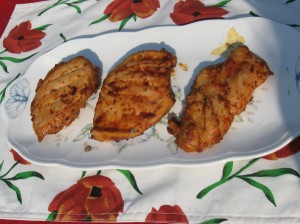
Putting together the Chilled Black Bean Salad with Avocado is not only simple, but it serves an important balancing effect during the course of the meal. The flavors of the black beans with the avocado cause a temporary cooling effect from the spicy salsa and chicken. Not only does the salad give a cool reprieve from the spices in the meal, but it also clears your palate to prepare you for a sweet refreshing sip of Mayo’s Gewürztraminer.
Finally, rather than preparing an elaborate sweet dessert, slices of fresh white nectarine are the perfect palate cleanser at the end of a spicy, hot meal. The fruit also pairs nicely with the wine and reminds you that sometimes wine can be enjoyed in the most simple and casual of settings.
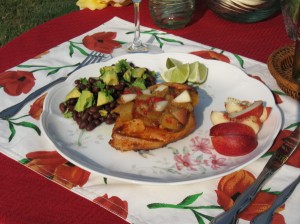
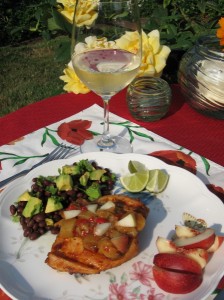
Whether you find yourself in hot final days of summer or are craving a hot and spicy meal, look for Gewürztraminer. As you sip this semi-sweet flamboyant wine, you cannot resist putting your feet up and relaxing during these lazy last moments of summer.
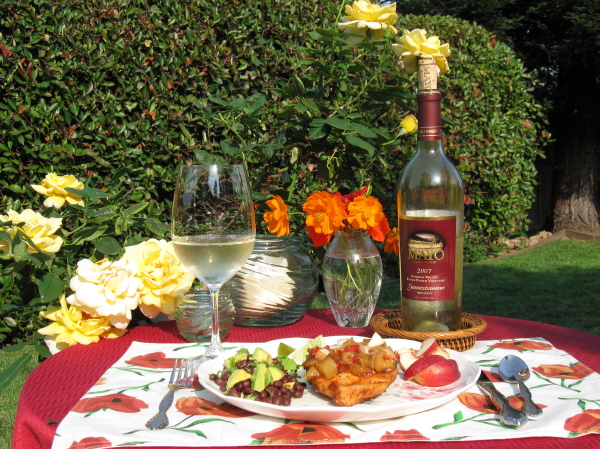
Comments Off on Some Like it Hot
